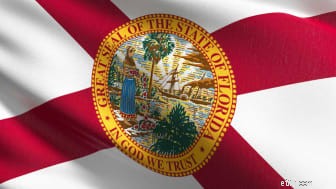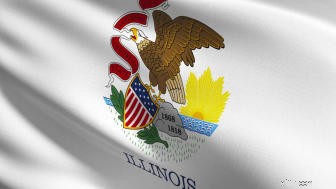
COVID-19 전염병 덕분에 수백만 명의 미국인이 미국 실업 수당 시스템에 대한 원치 않는 집중 과정을 받았습니다. 실업급여를 처음 신청하는 사람들이 자주 묻는 질문이 있습니다. 혜택은 어떻게 신청하나요? 얼마를 받을 수 있나요? 혜택은 얼마나 오래 지속됩니까? 사람들은 즉시 이러한 질문에 대한 답을 필요로 합니다. 그러나 급여를 받기 시작하면 실업 수당에 대해 세금을 내야 합니까?와 같은 또 다른 질문이 떠오를 것입니다.
연방 소득세와 관련하여 일반적인 대답은 예입니다. Uncle Sam은 실업 수당에 마치 임금인 것처럼 세금을 부과합니다(하지만 2020년에 받은 실업 수당 중 최대 $10,200가 면제됩니다. 조정 총 소득이 $150,000 미만인 사람들을 위한 연방세 ). 그러나 주 소득세에 관해서는 거주 지역에 따라 다릅니다. 대부분의 주에서는 실업 수당에 세금을 완전히 부과합니다. 그러나 일부 주에서는 세금을 전혀 부과하지 않으며(때로는 주에 소득세가 없기 때문에), 소수의 주에서는 혜택의 일부에만 세금을 부과합니다. 또한 연방 정부와 마찬가지로 일부 주에서는 전염병으로 인해 실직한 사람들을 돕기 위해 2020년 및/또는 2021년 일반 규칙에 특별 예외를 적용하고 있습니다.
실업 수당 과세와 관련하여 귀하의 주는 어디에 있습니까? 알아 보려면 계속 읽으십시오. 또한 2020년에 받은 실업 수당에 대한 연방 $10,200 면제를 처리하는 방법에 대한 지침을 발표한 주를 알려드립니다. 그런 다음 보너스로 각 주의 소득, 판매 및 재산세 수준에 대해 설명합니다. 그리고 중산층 가족에 대한 세금에 대한 주별 안내서에서 해당 주의 페이지에 대한 링크를 제공하여 거주 지역의 전반적인 세금 부담을 파악할 수 있습니다.

실업 혜택에 대한 주세: 앨라배마는 실업 수당에 세금을 부과하지 않습니다. 또한 연방 CARES 법 및 후속 연장을 통해 제공되는 실업 보상은 2020년 및 2021년 과세 연도에 대해 주, 카운티 또는 지방 소득세가 면제됩니다.
"행정적 축소"의 결과로 고용주로부터 퇴직금, 실업 수당 등으로 받은 첫 $50,000도 과세되지 않습니다.
주 소득세 범위: 낮음:2%(결혼 공동 신고자의 경우 과세 소득의 최대 $1,000, 기타 모든 신고자의 경우 과세 소득의 최대 $500). 높음:5%(기혼 공동 신고자의 과세 소득 $6,000 이상, 기타 모든 신고자의 경우 과세 소득 $3,000 이상) 일부 앨라배마 지방 자치 단체에서는 급여와 임금에 대해 직업세를 부과하기도 합니다.
판매세: 4% 국가 부담금. 세금 재단에 따르면 지역은 여기에 7.5%까지 추가할 수 있으며 평균 합산 세율은 9.22%입니다.
재산세: 앨라배마에서 중간 재산세율은 주택 평가액 $100,000당 $395입니다.
자세한 내용은 중산층 가족을 위한 앨라배마 주 세금 안내를 참조하세요. .

실업 혜택에 대한 주세: 알래스카는 실업 수당에 세금을 부과하지 않습니다.
주 소득세 범위: 주 소득세가 없습니다.
판매세: 알래스카는 주가 없는 5개 주 중 하나입니다. 판매세. 그러나 지역에서는 판매세를 부과할 수 있으며 최고 7.5%까지 올라갈 수 있습니다. 그러나 조세 재단에 따르면 주 전체 평균은 1.76%에 불과합니다.
재산세: 알래스카의 중간 재산세율은 주택 평가액 $100,000당 $1,182입니다.
자세한 내용은 중산층 가족을 위한 알래스카 주 세금 안내를 참조하세요.

실업 혜택에 대한 주세: 애리조나는 일반적으로 연방법에 따라 과세되는 것과 동일한 정도로 실업 수당에 세금을 부과합니다. 주정부는 또한 2020년에 받은 실업 수당 중 최대 $10,200에 대해 연방 면제를 채택했습니다. 2020년에 실업 수당을 받고 2021년 3월 11일 이전에 2020년 애리조나 세금 보고서를 제출한 납세자는 애리조나 세금 환급을 받기 위해 애리조나 보고서를 수정해야 합니다. 그들이 과도하게 납부한 소득세. 2021년 3월 11일 이후에 애리조나 신고서를 제출한 납세자는 이미 면제 혜택을 받았을 가능성이 높으므로 수정된 애리조나 신고서를 제출해서는 안 됩니다. 그러나 애리조나 신고서를 제출한 시기에 관계없이 IRS로부터 실업 수당에 대한 연방 소득세 환급을 받은 납세자는 2020년 애리조나 신고서를 수정해야 합니다.
주 소득세 범위: 낮음:2.59%(공동 신고자의 경우 과세 소득의 최대 $54,615, 단일 신고자의 경우 최대 $27,808) 높음:4.5%(공동 신고자의 경우 과세 소득이 $500,000 이상이고 단일 납세자의 경우 과세 소득이 $250,000 이상인 경우)
2021년부터 애리조나는 공동 신고자의 경우 $500,000, 단일 납세자의 경우 $250,000 이상의 과세 소득에 대해 3.5%의 추가 세금을 부과합니다. 그러나 부가세는 전체 최고 세율을 4.5% 이상으로 높일 수 없습니다(위에 언급된 4.5% 세율에는 부가세가 포함됨). 또한 부가세는 법원에서 이의를 제기하고 있어 법원에서 파기하면 결국 아예 적용되지 않을 가능성도 있다.
2022년부터 이중 세율 구조가 채택됩니다. 세율은 2.55%(공동 신고자의 경우 최대 $54,544, 단일 신고자의 경우 최대 $27,272) 및 2.98%(공동 신고자의 경우 과세 소득의 $54,54 초과 및 단일 신고자의 과세 소득의 $27,272 초과)입니다. ). 특정 주 수입 금액에 도달하면 세율이 각각 2.53% 및 2.75%로 감소합니다. 주정부는 다른 주 수입 금액에 도달하면 2.5%의 단일 고정 세율을 채택합니다.
판매세: 5.6% 국가 부담금. 세금 재단에 따르면 지역은 여기에 5.6%까지 추가할 수 있지만 평균 합산 세금은 8.4%입니다.
재산세: 애리조나의 중간 재산세율은 주택 평가액 $100,000당 $617입니다.
자세한 내용은 중산층 가족을 위한 애리조나 주 세금 가이드를 참조하세요.

실업 혜택에 대한 주세: 아칸소주는 일반적으로 실업 수당에 세금을 부과합니다. 단, 2020년과 2021년에 지급된 실업급여는 세금이 면제됩니다.
주 소득세 범위: 낮음:2%(순 소득이 $23,600 미만인 납세자의 과세 소득 $4,800~$9,499), 0.75%(순 소득이 $23,600~$84,500인 납세자의 과세 소득의 첫 번째 $4,799) 또는 2%(첫 번째 $의 경우) 순소득이 $84,500를 초과하는 납세자의 과세 대상 소득). 높음:3.4%(순 소득이 $23,600 미만인 납세자의 과세 소득에 대해 $14,300~$23,599), 5.9%(순 소득이 $23,600~$84,500인 납세자의 과세 소득에 대해)% 또는 과세 대상 순 소득이 $84,500 이상인 납세자의 경우 $8,500 이상).
2022년부터 순소득이 $84,500 이하인 사람의 경우 순소득이 $5,000~$9,999이고 순소득이 $84,500 이상인 사람의 경우 순소득의 처음 $4,300에 2%의 세율이 적용됩니다. 최고 세율은 5.5%로 떨어지고 순이익이 $84,500 이하인 사람의 경우 순이익이 $39,700 ~ $84,500, 순이익이 $84,500 이상인 사람의 경우 순이익이 $8,500 이상인 경우 적용됩니다.
2023년부터 최고세율은 다시 5.3%로 인하된다. 특정 날짜까지 주의 재난 예비 기금에서 자금이 이전되지 않으면 최고 금리는 2024년에는 5.1%로, 2025년 이후에는 4.9%로 다시 떨어집니다.
판매세: 6.5% 국가 부담금. 세금 재단에 따르면 지역은 최대 6.125%까지 추가할 수 있으며 평균 합산 세율은 9.48%입니다.
재산세: Arkansas 주택 소유자의 중간 재산세율은 주택 평가액 $100,000당 $612입니다.
자세한 내용은 중산층 가족을 위한 아칸소 주 세금 가이드를 참조하세요.

실업 혜택에 대한 주세: 캘리포니아 주민들은 실업 수당에 대해 주 소득세를 내지 않아도 됩니다.
2020년에 받은 실업 수당에 대한 연방 $10,200 면제의 결과로, 3월 11일 이전에 2020년 캘리포니아 세금 보고서를 제출하고 캘리포니아 근로 소득세 공제(CalEITC)를 청구하고 실업 소득을 보고한 사람들은 캘리포니아 반환을 수정합니다. 주에서는 2021년 8월부터 필요한 변경을 하고 그에 따른 주 세금 환급액을 보내드립니다. 또한 3월 11일 이후에 2020년 캘리포니아 세금 보고서를 제출하고 CalEITC를 청구하고 실업 소득을 보고하는 경우 조치가 필요하지 않습니다.
2020년 캘리포니아 세금 신고서를 제출하고 CalEITC를 청구하지 않았으며 실업 소득을 보고했으며 연방 AGI가 $40,201(단독) 또는 $50,401(결혼 공동 보고) 미만인 경우 CalEITC 자격이 있는지 확인하십시오. 그렇다면 양식 FTB 3514를 우편으로 보내주십시오. 캘리포니아 세금 보고서를 수정할 필요가 없습니다.
주 소득세 범위: 낮음:1%(결혼한 공동 신고자의 경우 과세 소득의 최대 $17,864, 개별 신고자의 경우 최대 $8,932). 높음:13.3%(결혼 공동 신고자의 경우 $1,198,024 이상, 개별 신고자의 경우 100만 달러 이상)
2021년에는 1% 세율이 공동 신고자의 과세 대상 소득의 처음 $18,650, 단일 신고자의 과세 소득의 첫 번째 $9,325에 적용됩니다. 13.3%의 세율은 공동 신고자의 경우 $1,250,738 이상, 단일 신고자의 경우 100만 달러 이상의 과세 소득에 적용됩니다.
판매세: 7.25% 국가 부담금. 세금 재단에 따르면 지역은 최대 2.5%까지 추가할 수 있으며 평균 합산 세율은 8.82%입니다.
재산세: 캘리포니아에서 중간 재산세율은 주택 평가액 $100,000당 $729입니다.
자세한 내용은 중산층 가족을 위한 캘리포니아 주 세금 가이드를 참조하세요.

실업 혜택에 대한 주세: 콜로라도는 모든 실업 수당에 세금을 부과합니다.
2020년 콜로라도 소득세 신고서를 작성할 때 미국 구조 계획법(American Rescue Plan Act)에 따라 연방 과세 소득에서 제외된 실업 보상 금액을 다시 추가해야 합니다. 이 금액은 법에서 요구하는 기타 추가 금액과 함께 콜로라도 보고서의 6행(기타 추가 사항)에 추가되어야 합니다. 설명란에 "실업보상금"을 입력합니다.
소득세 범위: 콜로라도의 고정 소득세율은 4.55%입니다(2020년 11월 투표에 등장한 발의안 116의 승인으로 세율이 4.63%에서 4.55%로 인하됨). 또한 주정부는 수입 증가율이 너무 높을 경우 세율을 낮추어 매년 수입 증가율을 제한합니다. 예를 들어 2019년에는 4.5%로 요금이 인하되었습니다. 덴버와 콜로라도의 몇몇 다른 도시에서도 월별 급여세를 부과합니다.
판매세: 2.9% 국가 부담금. 세금 재단에 따르면 지역은 최대 8.3%까지 추가할 수 있으며 평균 합산 세율은 7.72%입니다.
재산세: 콜로라도에서 중간 재산세율은 주택 평가액 $100,000당 $494입니다.
자세한 내용은 중산층 가족을 위한 콜로라도 주 세금 가이드를 참조하세요.

실업 혜택에 대한 주세: 코네티컷은 연방법에 따라 과세되는 것과 동일한 정도로 실업 수당에 세금을 부과합니다. 결과적으로 연방 소득세가 면제되는 2020년에 받은 모든 실업 보상(최대 $10,200)에는 코네티컷 소득세가 적용되지 않습니다. 이미 연방 및 코네티컷 보고서를 제출했고 연방 보고서를 수정해야 하는 경우 수정된 연방 보고서에 보고한 연방 AGI를 사용하여 CT-1040X 양식을 제출하여 코네티컷 보고서를 수정하십시오. 연방 보고서를 수정할 필요가 없는 경우(즉, IRS가 자동으로 보고서를 다시 계산할 것으로 예상하는 경우) 현재 코네티컷 보고서를 수정하지 마십시오. 주는 재계산이 납세자와 주 세무 기관에 보고되는 방법에 대한 IRS의 추가 지침을 기다리고 있습니다.
주 소득세 범위: 낮음:3%(결혼한 공동 신고자의 경우 과세 소득의 최대 $20,000, 개별 신고자의 경우 최대 $10,000) 높음:6.99%(결혼 공동 신고자의 경우 100만 달러 이상, 개별 신고자의 경우 500,000달러 이상)
판매세: 주정부는 대부분의 항목에 6.35%의 세금을 부과하며 지역에서는 추가할 수 없습니다.
재산세: 코네티컷 거주자의 중간 재산세율은 주택 평가액 $100,000당 $2,139입니다.
자세한 내용은 중산층 가족을 위한 코네티컷 주 세금 가이드를 참조하세요.

실업 혜택에 대한 주세: 실업 수당은 일반적으로 델라웨어에서 과세됩니다. 그러나 2020년에 받은 실업 수당은 세금이 면제됩니다.
주 소득세 범위: 낮음:2.2%(과세 소득 $2,001~$5,000) 높음:높음:6.6%(과세 소득 $60,000 초과 시). Wilmington은 또한 임금에 도시세를 부과합니다.
판매세: 주와 지방 모두 판매세를 부과하지 않습니다.
재산세: 델라웨어 주택 소유자의 경우 재산세 중앙값은 주택 평가액 $100,000당 $562입니다.
자세한 내용은 중산층 가족을 위한 델라웨어 주 세금 안내서를 참조하세요.

실업 혜택에 대한 주세: 2021년부터 컬럼비아 특별구(워싱턴 D.C.)는 실업 수당에 세금을 부과하지 않습니다.
시는 2020년에 수령한 실업 수당에 대해 최대 $10,200의 연방 면제를 채택했습니다. 실업 면제를 보고하지 않고 원래의 2020 DC 세금 보고서를 제출한 납세자는 수정된 연방 조정 총 소득을 기반으로 수정된 보고서를 제출해야 합니다.
주 소득세 범위: 낮음:4%(과세 소득 최대 $10,000) 높음:8.95%(과세 소득 100만 달러 초과 시). 2022년부터 100만 달러 이상의 과세 소득에 대해 최고 세율이 10.75%가 됩니다.
판매세: 6% 도시 판매세.
재산세: 컬럼비아 특별구의 중간 재산세율은 주택 평가액 $100,000당 $564입니다.
자세한 내용은 중산층 가족을 위한 컬럼비아 특별구 세금 안내를 참조하세요.

실업 혜택에 대한 주세: 플로리다에서는 실업 수당에 대한 세금이 없습니다.
주 소득세 범위: 주 소득세가 없습니다.
판매세: 6% 국가 부과금. 세금 재단에 따르면 지역은 최대 2%까지 추가할 수 있으며 평균 합산 세율은 7.01%입니다.
재산세: 플로리다에서 중간 재산세율은 주택 평가액 $100,000당 $830입니다.
자세한 내용은 중산층 가족을 위한 플로리다 주 세금 가이드를 참조하세요.

실업 혜택에 대한 주세: 조지아는 실업 수당에 세금을 부과합니다.
주는 2020년에 받은 실업 수당 중 최대 $10,200에 대해 연방 면제를 채택하지 않았습니다. 납세자의 연방 보고서에서 제외된 모든 실업 소득은 조지아 양식 500, 스케줄 1, 5행에 다시 추가되어야 합니다.
주 소득세 범위: 낮음:1%(결혼한 부부가 공동으로 신고하는 경우 과세 대상 순소득의 처음 $1,000, 개인 신고자의 경우 처음 $750, 부부가 별도로 신고하는 경우 처음 $500). 높음:5.75%(결혼한 부부가 공동으로 신고하는 경우 과세 대상 순소득의 처음 $1,000, 개인 신고자의 경우 첫 번째 $750, 부부가 별도로 신고하는 경우 첫 번째 $500)
판매세: 4% 국가 부담금. 세금 재단에 따르면 지역은 최대 4.9%까지 추가할 수 있으며 평균 합산 세율은 7.33%입니다.
재산세: 조지아의 중간 재산세율은 주택 평가액 $100,000당 $875입니다.
자세한 내용은 중산층 가족을 위한 조지아 주 세금 가이드를 참조하세요.

실업 혜택에 대한 주세: 하와이에서는 실업 수당이 완전히 과세됩니다.
하와이 세무부는 주 입법부가 관련 법률을 통과할 때까지 2020년에 받은 실업 수당 중 처음 $10,200에 대한 연방 면제를 채택하는 것에 대한 확실한 지침을 제공할 수 없습니다.
주 소득세 범위: 낮음:1.4%(결혼한 부부가 공동으로 신고하는 경우 과세 대상 소득에 대해 최대 $4,800, 개별적으로 신고하는 부부의 경우 최대 $2,400). 높음:11%(기혼 부부가 공동으로 신고하고 생존 배우자의 경우 과세 소득 $400,000 초과, 개별 신고 및 개별 신고 부부의 경우 과세 소득 $200,000 초과)
판매세: 4% 국가 부담금. 세금 재단에 따르면 지역은 0.5%까지 추가할 수 있지만 평균 합산 세율은 4.44%에 불과합니다.
재산세: 하와이의 중간 재산세율은 주택 평가액 $100,000당 $280입니다.
자세한 내용은 중산층 가족을 위한 하와이 주 세금 가이드를 참조하세요.

실업 혜택에 대한 주세: 아이다호 주는 일반적으로 연방 수준에서 과세되는 것과 동일한 정도로 실업 수당에 세금을 부과합니다. 그러나 양식 1040, 스케줄 1, 8행에서 연방 세금 목적으로 제외된 2020년 실업 수당은 아이다호 소득세 신고서에 다시 추가되어야 합니다. 아이다호 양식 40을 제출하는 경우 제외 소득을 양식 39R, 파트 A, 6행 "기타 추가"에 보고하십시오. 아이다호 양식 43을 제출하는 경우 19행 "기타 소득"에 연방 실업 수당 제외를 포함하지 마십시오. 대신 Form 39NR, Part A, line 4, column A, "Other Additions"에 보고하십시오.
주 소득세 범위: 낮음:1%(기혼 공동 신고자의 경우 과세 대상 소득 최대 $3,176, 개인 신고자의 경우 최대 $1,588) 높음:6.5%(결혼 공동 신고자의 경우 과세 소득 $15,878 이상, 개인 신고자의 경우 과세 소득 $7,939 이상)
판매세: 6% 국가 부과금. 조세 재단(Tax Foundation)에 따르면 지역(일반적으로 리조트 커뮤니티)은 최대 3%까지 추가할 수 있지만 평균 합산 세율은 6.02%에 불과합니다.
재산세: 아이다호에서 중간 재산세율은 주택 평가액 $100,000당 $633입니다.
자세한 내용은 중산층 가족을 위한 아이다호 주 세금 안내를 참조하세요.

실업 혜택에 대한 주세: 일리노이주는 일반적으로 실업 수당에 세금을 전액 부과합니다. 그러나 주는 2020년 실업 수당에 대해 $10,200 연방 세금 면제를 채택했습니다. 2021년 3월 15일 이전에 2020년 일리노이 세금 보고서를 전자적으로 제출했다면 아무 조치도 취하지 않아도 됩니다. 일리노이 국세청은 조정 총소득(AGI)을 자동으로 업데이트하고 필요한 환불을 보냈어야 합니다. 2021년 3월 14일 이후에 서면 또는 전자 방식으로 보고서를 제출했고 연방 보고서에 실업 배제를 보고하지 않은 경우 양식 IL-1040-X를 사용하여 수정된 보고서를 제출하고 견적서를 포함해야 합니다. AGI의 재계산을 보여주는 연방 양식 1040 및 스케줄 1. 양식 IL-1040-X 상단에 "실업 배제"라고 기재하십시오.
주 소득세 범위: 수정 및 개인 면제 후 연방 조정 총 소득의 4.95%의 고정 세율이 있습니다.
판매세: 6.25% 국가 부담금. 세금 재단에 따르면 지역은 최대 4.75%까지 추가할 수 있으며 평균 합산 세율은 8.83%입니다.
재산세: 일리노이에서 중간 재산세율은 주택 평가액 $100,000당 $2,165입니다.
자세한 내용은 중산층 가족을 위한 일리노이 주 세금 안내서를 참조하세요.

실업 혜택에 대한 주세: 실업 수당은 인디애나 주에서 과세 대상이지만 수혜금의 일부가 공제될 수 있습니다. 공제액은 연방 조정 총 소득, 실업 수당 금액, 신고 상태에 따라 다릅니다. 정확한 공제액을 계산하려면 양식 IT-40 지침 책자의 "실업 보상 워크시트"를 작성하십시오.
2020년에 받은 실업 수당의 최대 $10,200에 대한 연방 면제는 인디애나에서 적용되지 않습니다. 따라서 인디애나 소득세 신고 시 연방 소득세 목적에서 제외된 금액을 다시 추가해야 합니다.
인디애나는 연방 소득세 목적으로 금액이 제외된 경우 인디애나 조정 총 소득에 2020년 실업 보상을 포함하지 않은 결과로 인해 발생하는 모든 세금에 대한 이자와 벌금을 면제합니다. 그러나 2021년 9월 30일 이후 만기 금액에 대해서는 이자가 면제되지 않습니다.
주 소득세 범위: Hoosier 주에는 수정 후 주 조정 총 소득의 3.23%의 고정 세율이 있습니다. 카운티에서도 소득세를 부과합니다.
판매세: 7% 국세 부과. 지방세가 없습니다.
재산세: 인디애나 주택 소유자의 중간 재산세율은 평가 주택 가치 $100,000당 $810입니다.
자세한 내용은 중산층 가족을 위한 인디애나 주 세금 안내를 참조하세요.

실업 혜택에 대한 주세: 실업 수당은 일반적으로 아이오와에서 완전히 과세됩니다. 그러나 주는 2020년에 받는 실업 수당에 대해 연방 $10,200 면제를 채택합니다. 아이오와 국세청은 이미 2020년 아이오와 소득세 신고서를 제출한 사람들에 대해 자동 조정을 할 것입니다. 결과적으로 납세자는 수정된 아이오와주 세금 보고서가 실업 보상과 관련된 경우에만 수정된 아이오와 세금 보고서를 제출할 필요가 없습니다. 2020년 아이오와 세금 보고서 원본을 제출하는 사람들은 M 코드를 사용하여 양식 IA 1040, 14행에 실업 보상 제외 금액을 보고해야 합니다.
주 소득세 범위: 낮음:0.33%(과세 소득의 최대 $1,676) 높음:8.53%(과세 소득 $75,240 초과 시) 아이오와에는 학교 및 응급 서비스에 사용되는 지역 소득 부가세가 있습니다.
2022년에는 $1,743까지 과세 소득에 가장 낮은 세율이 적용되고 $78,435를 초과하는 과세 소득에 가장 높은 세율이 적용됩니다.
2023년부터 아이오와주의 가장 낮은 개인 소득세율은 4.4%(단독 신고자의 과세 소득 최대 $6,000, 공동 신고자의 과세 소득 최대 $12,000)이고 최고 세율은 6.5%(초과세 기준)입니다. 단일 신고자의 과세 소득 $75,000, 공동 신고자의 과세 소득 $150,000 이상).
판매세: 6% 국가 부과금. 세금 재단에 따르면 지역은 최대 1%까지 추가할 수 있으며 평균 합산 세율은 6.94%입니다.
재산세: 아이오와의 중간 재산세율은 주택 평가액 $100,000당 $1,529입니다.
자세한 내용은 중산층 가족을 위한 아이오와 주 세금 안내를 참조하세요.

실업 혜택에 대한 주세: Kansas는 연방법에 따라 과세되는 것과 동일한 정도로 실업 수당에 세금을 부과합니다. 결과적으로 2020년에 받은 실업 수당에 대한 연방 $10,200 면제는 캔자스 소득세 목적에도 적용됩니다. 면제를 주장하지 않고 2020년 캔자스 세금 보고서를 이미 제출한 경우 연방 제외에 대해 IRS에서 받은 서신의 사본과 함께 수정된 주 세금 보고서를 제출해야 합니다.
주 소득세 범위: 낮음:3.1%(단독 신고자의 경우 과세 소득 $2,501~$15,000, 공동 신고자의 경우 $5,001~$30,000) 높음:5.7%(단독 신고자의 과세 소득 $30,000 이상, 공동 신고자의 경우 과세 소득 $60,000 이상) 캔자스는 또한 일부 지역에서 불로 소득에 대해 "무형 세금"을 부과합니다.
판매세: 6.5% 국가 부담금. 세금 재단에 따르면 지역은 최대 4%까지 추가할 수 있으며 평균 합산 세율은 8.7%입니다.
재산세: 캔자스에서 주택 소유자의 중간 재산세율은 주택 평가액 $100,000당 $1,369입니다.
자세한 내용은 중산층 가족을 위한 캔자스 주 세금 가이드를 참조하세요.

실업 혜택에 대한 주세: 실업 수당은 켄터키에서 완전히 과세됩니다.
주는 2020년에 받은 실업 수당 중 최대 $10,200에 대해 연방 면제를 채택하지 않았습니다. 켄터키 주 거주자의 연방 소득세 신고서에서 제외된 모든 실업 수당은 스케줄 M, 5행의 켄터키주 개인 소득세 신고서에 다시 추가되어야 합니다. , "기타 추가 사항"으로.
주 소득세 범위: 켄터키는 고정 소득세율이 5%입니다. 특정 카운티, 도시 및 기타 지방 정부 기관(예:교육청)은 경계 내에서 일하는 직원이 번 급여에 대해 추가 직업 면허 급여세를 부과할 수 있습니다.
판매세: 국세 6%. 켄터키에는 지역 판매세가 없습니다.
재산세: 켄터키주의 중간 재산세율은 주택 평가액 $100,000당 $829입니다.
자세한 내용은 중산층 가족을 위한 켄터키 주 세금 가이드를 참조하세요.

실업 혜택에 대한 주세: 루이지애나는 연방법에 따라 과세되는 것과 동일한 정도로 실업 수당에 세금을 부과합니다. 결과적으로 2020년에 받은 실업 수당에 대한 연방 $10,200 면제는 루이지애나 소득세 목적에도 적용됩니다. 면제를 요구하지 않고 이미 2020년 루이지애나 세금 보고서를 제출한 경우 수정된 주 보고서를 제출하고 "라인 7, 연방 조정 총 소득"(또는 사용되는 경우 스케줄 E, 라인 1)을 귀하의 세금에 허용된 면제 금액만큼 줄여야 합니다. 연방 반환.
주 소득세 범위: 낮음:2%(개인의 경우 과세 소득 $12,500 이하, 공동 신고자의 경우 $25,000) 높음:6%(과세 소득 $50,000 이상, 공동 신고자의 경우 $100,000)
(참고로, 2022년부터 루이지애나의 가장 낮은 개인 소득세율은 1.85%, 가장 높은 세율은 4.25%입니다. 또한 각 개인 소득세율은 2024년 4월 1일부터, 그 이후에는 매년 4월 1일까지 인하됩니다. 2034년, 직전 회계연도의 실제 개인소득세 징수액이 일정금액을 초과하는 경우)
판매세: 4.45% 국가 부담금. 조세 재단에 따르면 지역은 최대 7%까지 추가할 수 있으며 평균 합산 세율은 9.55%입니다.
재산세: 루이지애나의 중간 재산세율은 주택 평가액 $100,000당 $534입니다.
자세한 내용은 중산층 가족을 위한 루이지애나 주 세금 가이드를 참조하세요.

State Taxes on Unemployment Benefits: Unemployment benefits are usually fully taxable in Maine. However, to the extent its included in federal adjusted gross income (AGI), up to $10,200 of unemployment compensation received in 2020 is not taxed by Maine for people with a federal AGI less than $150,000 (for joint filers, up to $10,200 per spouse is exempt from state tax). If you filed your 2020 Maine personal income tax return before the exemption was available, you should file an amended state tax return to claim the exemption.
State Income Tax Range: Low: 5.8% (on taxable income less than $22,450 for single filers; less than $44,950 for joint filers). High: 7.15% (on taxable income of $53,150 or more for single filers; $106,350 for joint filers). For 2022, the 5.8% rate applies to taxable income less than $23,000 for single filers and less than $46,000 for joint filers. The 7.15% rate applies to taxable income over $54,450 for single filers and over $108,900 for joint filers.
Sales Tax: 5.5% state levy. No local taxes.
Property Taxes: In Maine, the median property tax rate is $1,295 for every $100,000 of assessed home value.
For more information, go to the Maine State Tax Guide for Middle-Class Families.

State Taxes on Unemployment Benefits: Maryland generally taxes unemployment benefits to the same extent they are taxed at the federal level. However, under state law, unemployment compensation received in 2020 or 2021 is not taxed by the state for people with a federal adjusted gross income of $75,000 or less ($100,000 or less for married couples filing a joint return and head-of-household filers).
With regard to the federal exemption for up to $10,200 of unemployment compensation received in 2020, any amount of unemployment compensation over $10,200 that is included at the federal level can be excluded from taxable income for Maryland tax purposes, subject to Maryland's income caps for the state tax exemption ($75,000 or $100,000). Taxpayers who qualify for the federal exemption, but don't qualify for the Maryland exemption, don't have to add back the amount excluded from federal adjusted gross income because the federal exemption flows to the Maryland return.
State Income Tax Range: Low: 2% (on less than $1,000 of taxable income). High: 5.75% (on more than $250,000 of taxable income for single filers; more than $300,000 for joint filers). Maryland counties and Baltimore City levy additional income taxes.
Sales Tax: State levy of 6%. There are no local sales taxes in Maryland.
Property Taxes: In Maryland, the median property tax rate for homeowners is $1,057 per $100,000 of assessed home value.
For more information, go to the Maryland State Tax Guide for Middle-Class Families.

State Taxes on Unemployment Benefits: Massachusetts generally taxes unemployment benefits. However, for the 2020 and 2021 tax years, up to $10,200 of unemployment compensation that's included in a taxpayer's federal adjusted gross income is exempt for Massachusetts tax purposes if the taxpayer’s household income is not more than 200% of the federal poverty level. Up to $10,200 can be claimed by each eligible spouse on a joint return for unemployment compensation received by that spouse. Note that, since the Massachusetts income threshold is different from the federal income threshold (AGI of less than $150,000), some taxpayers may be eligible for a deduction on their federal tax return but not on their Massachusetts tax return.
Taxpayers who already filed their 2020 Massachusetts tax return and reported unemployment compensation as income should not file an amended return until they hear from the state Department of Revenue. The state is sending notices to taxpayers who reported unemployment compensation to explain whether they may be eligible for relief. If a taxpayer is eligible for a refund, the state will issue a refund and the taxpayer need not take any action. However, if a taxpayer has unpaid tax or another specific governmental liability, the state will first apply any overpayment toward those liabilities.
If you have a balance due on your 2020 Massachusetts tax return only because taxes were not paid on unemployment compensation, the state will waive related late payment and underpayment of estimated tax penalties through the end of 2021. After that date, if you haven't paid your 2020 taxes in full, penalties will begin to accrue. Interest will be charged on any balance not paid by May 17, 2021.
State Income Tax Range: Massachusetts has a flat rate of 5% for most classes of taxable income. (Note:On November 8, 2022, Massachusetts voters will decide whether to add an additional 4% tax on taxable income over $1 million starting in 2023.)
Sales Tax: State levy of 6.25%. There are no local sales taxes in Massachusetts.
Property Taxes: The Massachusetts median property tax rate is $1,170 for every $100,000 of assessed home value.
For more information, go to the Massachusetts State Tax Guide for Middle-Class Families.

State Taxes on Unemployment Benefits: Unemployment compensation is generally subject to tax in Michigan. However, the $10,200 federal exemption for unemployment compensation received in 2020 also applies for Michigan income tax purposes. If you already filed a 2020 Michigan tax return without claiming the exemption, you can now claim it by filing an amended Michigan tax return. The state is still exploring potential automated mechanisms regarding the exemption, but there is no current timetable or certainty for this option. Also note that interest and penalties for failure to pay Michigan estimated tax on unemployment benefits received in 2020 are waived.
State Income Tax Range: Michigan has a flat tax rate of 4.25%. Cities can levy income taxes as well, on both residents and non-residents (who are taxed 1/2 the rate of residents).
Sales Tax: State levy of 6%. There are no local sales taxes in Michigan.
Property Taxes: In Michigan, the median property tax rate is $1,448 per $100,000 of assessed home value.
For more information, go to the Michigan State Tax Guide for Middle-Class Families.

State Taxes on Unemployment Benefits: Minnesota generally taxes unemployment benefits. However, the state has adopted the federal exclusion for up to $10,200 of unemployment compensation received in 2020.
If you filed a 2020 Minnesota income tax return that included unemployment compensation, the state will either (1) adjust your return and issue you a refund, or (2) ask you to amend your return. If the state can adjust your return, you will receive a letter describing the change and any refund you may receive as a result. If you need to amend your return, the state will send you a letter about amending your return. Do not file an amended return before hearing from the state.
State Income Tax Range: Low: 5.35% (on less than $27,230 of taxable income for single filers and on less than $39,810 for joint filers). High: 9.85% (on more than $166,040 of taxable income for single filers and on more than $276,200 for joint filers).
Sales Tax: 6.875% state levy. Localities can add as much as 2%, with an average combined rate of 7.47%, according to the Tax Foundation.
Property Taxes: The Minnesota median property tax rate is $1,082 per $100,000 of assessed home value.
For more information, go to the Minnesota State Tax Guide for Middle-Class Families.

State Taxes on Unemployment Benefits: Mississippi residents are fully taxed on their unemployment compensation. The state has not adopted the federal exemption for unemployment compensation received in 2020.
State Income Tax Range: Low: 3% (on taxable income from $3,001 to $5,000). High: 5% (on taxable income over $10,000).
Sales Tax: 7% state levy. Only two localities, Jackson (1%) and Tupelo (0.25%) add to that. According to the Tax Foundation, that makes for an average combined rate of 7.07%.
Property Taxes: The median property tax rate for Mississippi homeowners is $787 per $100,000 of assessed home value.
For more information, go to the Mississippi State Tax Guide for Middle-Class Families.

State Taxes on Unemployment Benefits: Unemployment compensation is generally taxed in Missouri to the same extent it's taxed under federal law. As a result, the state has adopted the federal exemption for up to $10,200 of unemployment compensation received in 2020. If you previously filed a 2020 Missouri tax return and reported unemployment income that is now excluded from your federal adjusted gross income, you must file an amended Missouri return to claim the exemption for state tax purposes.
State Income Tax Range: Low: 1.5% (on taxable income from $108 to $1,088). High: 5.4% (on more than $8,704 of taxable income). Kansas City and St. Louis also impose an earnings tax.
Sales Tax: 4.225% state levy. Localities can add as much as 5.763%, and the average combined rate is 8.25%, according to the Tax Foundation.
Property Taxes: For Missouri residents, the median property tax rate is $930 per $100,000 of assessed home value.
For more information, go to the Missouri State Tax Guide for Middle-Class Families.

State Taxes on Unemployment Benefits: Montana currently does not tax unemployment benefits.
Taxpayers who filed a Montana tax return on or before March 12, 2021, should not amend the state return to report the federal exclusion of up to $10,200 in unemployment compensation received in 2020 if it was already excluded on the return. Taxpayers filing after March 12, 2021, should follow the instructions for Schedule 1, Line 8; Additions Schedule, Line 14; and Subtractions Schedule, Line 7, to exclude all unemployment compensation from Montana income tax.
Beginning in 2024, the exemption for unemployment compensation is repealed.
State Income Tax Range: Low: 1% (on up to $3,100 of taxable income). High: 6.9% (on taxable income over $18,700). Starting in 2022, the top rate will be 6.75% on taxable income over $17,400. Then, beginning in 2024, the income tax rates and brackets will be substantially revised (there will only be two rates – 4.7% and 6.5%).
Sales Tax: No state sales tax. Resort areas such as Big Sky, Red Lodge and West Yellowstone have local sales taxes.
Property Taxes: For homeowners in Montana, the median property tax rate is $831 for every $100,000 of assessed home value.
For more information, go to the Montana State Tax Guide for Middle-Class Families.

State Taxes on Unemployment Benefits: Unemployment benefits are taxed in Nebraska to the same extent they are taxed under federal law. As a result, the state follows the federal exemption for up to $10,200 of unemployment compensation received in 2020. The state will generally adjust the tax on Nebraska returns of people who electronically filed their returns before April 1, 2021, to the extent it can determine that exempt unemployment compensation was not excluded from income. If an adjustment is made to your return, the state will send a letter notifying you of the correction. The state will not make adjustments to some returns. In that case, an amended Nebraska return may be necessary to claim the exemption. Attach a copy of your notice of adjustment from the IRS or a copy of your federal amended return if you file a Nebraska amended return.
State Income Tax Range: Low: 2.46% (on up to $3,290 of taxable income for single filers and $6,570 for married couples filing jointly). High: 6.84% (on taxable income over $31,750 for single filers and $63,500 for married couples filing jointly).
Sales Tax: 5.5% state levy. Localities can add as much as 2.5%, and the average combined rate is 6.94%, according to the Tax Foundation.
Property Taxes: In Nebraska, the median property tax rate for homeowners is $1,614 per $100,000 of assessed home value.
For more information, go to the Nebraska State Tax Guide for Middle-Class Families.

State Taxes on Unemployment Benefits: There are no taxes on unemployment benefits in Nevada.
State Income Tax Range: There is no state income tax.
Sales Tax: 6.85% state levy. Localities can add as much as 1.53%, and the average combined rate is 8.23%, according to the Tax Foundation.
Property Taxes: Nevada's median property tax rate is $533 per $100,000 of assessed home value.
For more information, go to the Nevada State Tax Guide for Middle-Class Families.

State Taxes on Unemployment Benefits: There are no taxes in New Hampshire on unemployment benefits.
State Income Tax Range: New Hampshire doesn't have an income tax. However, currently there's a 5% tax on dividends and interest in excess of $2,400 for individuals ($4,800 for joint filers).
The tax on dividends and interest is being phased out. The rate will be 4% for 2023, 3% for 2024, 2% for 2025, and 1% for 2026. The tax will then be repealed on January 1, 2027.
Sales Tax: No sales tax.
Property Taxes: The median property tax rate in New Hampshire is $2,050 for every $100,000 of assessed home value.
For more information, go to the New Hampshire State Tax Guide for Middle-Class Families.

State Taxes on Unemployment Benefits: New Jersey does not tax unemployment compensation.
State Income Tax Range: Low: 1.4% (on up to $20,000 of taxable income). High: 10.75% (on taxable income over $1 million). Newark also imposes a payroll tax.
Sales Tax: 6.625% state levy. That rate is cut in half (3.3125%) for in-person sales in designated Urban Enterprise Zones located in disadvantaged areas. Salem County, which borders no-tax Delaware, also charges the reduced 3.3125% rate. As a result, the average rate in the state is 6.6%, according to the Tax Foundation.
Property Taxes: In New Jersey, the median property tax rate is $2,417 per $100,000 of assessed home value.
For more information, go to the New Jersey State Tax Guide for Middle-Class Families.

State Taxes on Unemployment Benefits: Unemployment benefits are taxed in New Mexico to the same extent they are taxed under federal law. As a result, any unemployment compensation received in 2020 (up to $10,200) exempt from federal income tax is also exempt from New Mexico income tax. Taxpayers who filed their 2020 New Mexico income tax return before claiming the unemployment compensation exemption may wish to amend their state return.
State Income Tax Range: Low: 1.7% (on up to $5,500 of taxable income for single filers and $8,000 for joint filers). High: 5.9% (on taxable income over $210,000 for single filers and over $315,000 for married couples filing jointly).
Sales Tax: 5.125% state levy. Localities can add as much as 4.313%, and the average combined rate is 7.84%, according to the Tax Foundation. New Mexico's tax is a gross receipts tax that covers most services.
Property Taxes: In New Mexico, the median property tax rate is $776 for every $100,000 of assessed home value.
For more information, go to the New Mexico State Tax Guide for Middle-Class Families.

State Taxes on Unemployment Benefits: New York generally taxes unemployment compensation to the same extent it is taxed under federal law. However, the state does not follow federal changes made after March 1, 2020. As a result, New York has not adopted the federal exemption for up to $10,200 of unemployment compensation received in 2020. If you have not yet filed your 2020 New York tax return, you must add back any federal unemployment compensation excluded on your federal return. If you already filed your 2020 New York return, and you didn't add back unemployment compensation that was excluded from your federal gross income, then you must file an amended New York return. If you didn't exclude unemployment compensation from your federal gross income, don't file an amended return.
State Income Tax Range: Low: 4% (on up to $8,500 of taxable income for single filers and up to $17,150 for married couples filing jointly). High: 10.9% (on taxable income over $25 million). New York City and Yonkers impose their own income tax. A commuter tax is also imposed on residents of New York City, as well as on residents of Rockland, Nassau, Suffolk, Orange, Putnam, Dutchess, and Westchester Counties.
Sales Tax: 4% state levy. Localities can add as much as 4.875%, and the average combined rate is 8.52%, according to the Tax Foundation. In the New York City metro area, there is an additional 0.375% sales tax to support transit.
Property Taxes: New York's median property tax rate is $1,692 per $100,000 of assessed home value.
For more information, go to the New York State Tax Guide for Middle-Class Families.

State Taxes on Unemployment Benefits: Unemployment benefits are taxed in North Carolina.
North Carolina has not adopted the federal exemption for up to $10,200 of unemployment compensation received in 2020. North Carolina generally follows federal tax law as it existed on May 1, 2020. As a result, the $10,200 exemption for unemployment compensation does not apply when calculating North Carolina taxable income for the 2020 tax year. Taxpayers who excluded the first $10,200 of unemployment benefits on their 2020 federal tax return must add back the excluded income when calculating 2020 North Carolina taxable income. If the state adopts the federal exclusion later, taxpayers who previously filed their 2020 North Carolina return may file an amended return to request a refund of any overpaid tax within the statute of limitations to seek a refund.
State Income Tax Range: For 2021, North Carolina has a flat rate of 5.25% of state taxable income. However, the rate is decreased to 4.99% for 2022, 4.75% for 2023, 4.6% for 2024, 4.5% for 2025, 4.25% for 2026, and 3.99% for 2027 and thereafter.
Sales Tax: 4.75% state levy. Localities can add as much as 2.75%, and the average combined rate is 6.98%, according to the Tax Foundation.
Property Taxes: The median property tax rate in North Carolina is $773 per $100,000 of assessed home value.
For more information, go to the North Carolina State Tax Guide for Middle-Class Families.

State Taxes on Unemployment Benefits: North Dakota taxes unemployment benefits to the same extent it is taxed under federal law. As a result, any unemployment compensation received in 2020 (up to $10,200) exempt from federal income tax is not subject North Dakota income tax.
For full-year North Dakota residents who filed a state tax return that was filed or postmarked before April 1, 2021, the state will recalculate the return and issue any refund stemming from the federal exemption. If you believe your return should have been corrected and have not received notice from the state tax commissioner's office, you can contact the office at 701-328-1247 or [email protected].
Nonresidents and part-year residents will need to amend their state tax return if North Dakota taxable income is affected.
State Income Tax Range: Low: 1.1% (on up to $40,525 of taxable income for singles and up to $67,700 for married couples filing jointly). High: 2.9% (on taxable income over $445,000).
Sales Tax: 5% state levy. Localities can add as much as 3.5%, and the average combined rate is 6.96%, according to the Tax Foundation.
Property Taxes: North Dakota's median property tax rate is $986 per $100,000 of assessed home value.
For more information, go to the North Dakota State Tax Guide for Middle-Class Families.

State Taxes on Unemployment Benefits: Ohio taxes unemployment compensation to the same extent it is taxed under federal law. As a result, any unemployment compensation received in 2020 (up to $10,200) exempt from federal income tax is not subject Ohio income tax.
The state has issued guidance to taxpayers who filed federal and Ohio tax returns without the unemployment benefits deduction and are now waiting for the IRS to issue a refund. After the IRS makes the adjustment, the taxpayer must (1) file an amended Ohio tax return to report your new federal adjusted gross income (AGI), (2) include a copy of your IRS Tax Account Transcript showing your new federal AGI, and (3) complete the Ohio Reasons and Explanation of Corrections (Ohio Form IT RE or SD RE). When completing the “Reasons and Explanation of Corrections” form, check the “Federal adjusted gross income decreased” box and list “Federal unemployment deduction refund” in the “Detailed explanation” section. If you are required to file an amended return with the IRS related to your unemployment benefits, you must wait to file your amended Ohio return until after your federal amended return has been accepted by the IRS.
In addition, you can request a waiver of any interest and penalties related to the payment of Ohio taxes on unemployment benefits received in 2020.
State Income Tax Range: Low: 2.765% (on taxable income from $25,001 to $44,250). High: High:3.99% (on taxable income over $110,650). Cities and school districts in Ohio can also impose local income taxes.
Sales Tax: 5.75% state levy. Localities can add as much as 2.25%, and the average combined rate is 7.22%, according to the Tax Foundation.
Property Taxes: The Ohio median property tax rate is $1,478 per $100,000 of assessed home value.
For more information, go to the Ohio State Tax Guide for Middle-Class Families.

State Taxes on Unemployment Benefits: Oklahoma taxes unemployment benefits to the same extent they are taxed on your federal return. As a result, the state adopts the federal exemption for up to $10,200 of unemployment compensation received in 2020. If you filed your Oklahoma tax return before March 15, 2021, you don't need to do anything. The Oklahoma Tax Commission will automatically update your adjusted gross income (AGI). If you are then entitled to a refund, the state will automatically send your a payment. If you filed your Oklahoma return after March 15, 2021, and didn't report the unemployment exemption on your federal return, you will need to file an amended Oklahoma return using Form 511X and include an estimated federal Form 1040 and Schedule 1 showing the re-computation of your AGI.
State Income Tax Range: Low: 0.5% (on up to $1,000 of taxable income for single filers and up to $2,000 for married joint filers). High: 5% (on taxable income over $7,200 for single filers and over $12,200 for married joint filers). Starting in 2022, the lowest rate will be 0.25% and the highest rate will be 4.75%.
Sales Tax: 4.5% state levy. Localities can add as much as 7%, and the average combined rate is 8.95%, according to the Tax Foundation.
Property Taxes: In Oklahoma, the median property tax rate is $869 per $100,000 of assessed home value.
For more information, go to the Oklahoma State Tax Guide for Middle-Class Families.

State Taxes on Unemployment Benefits: Oregon generally taxes unemployment benefits received during the year. However, the state does not tax unemployment benefits received as a result of work performed in any federally recognized Indian reservation in Oregon or other land in the state that has been set aside as the home of tribal Indians under federal protection.
Oregon follows the $10,200 federal exemption for unemployment benefits received in 2020. The Oregon Department of Revenue will automatically adjust the returns for taxpayers who already filed their 2020 Oregon tax return. Contact the Oregon DOR if you don't agree with your adjustment or were expecting an adjustment and haven't received a refund or notice from the state.
State Income Tax Range: Low: 4.75% (on up to $3,650 of taxable income for single filers and up to $7,300 for married couples filing jointly). High: 9.9% (on taxable income over $125,000 for single filers and over $250,000 for married couples filing jointly).
A "kicker" tax credit is available for the 2021 tax year (the credit is possible only in odd-numbered years), because actual state revenues exceeded forecasted revenues by 2% or more over the two-year budget cycle. For 2021, the credit is equal to 17.341% of your 2020 Oregon tax liability before any credits.
Sales Tax: No state or local sales tax.
Property Taxes: The median property tax rate for Oregon homeowners is $903 per $100,000 of assessed home value.
For more information, go to the Oregon State Tax Guide for Middle-Class Families.

State Taxes on Unemployment Benefits: Unemployment compensation is not taxable for Pennsylvania income tax purposes.
State Income Tax Range: Pennsylvania has a flat rate of 3.07%. Municipalities and school districts can also impose taxes on wages or income.
Sales Tax: 6% state levy. Philadelphia has a local sales tax of an additional 2%, and Allegheny County (Pittsburgh's home county) adds a local sales tax of 1%. The combined average state and local rate is 6.34%, according to the Tax Foundation.
Property Taxes: In Pennsylvania, the median property tax rate is $1,499 for every $100,000 of assessed home value.
For more information, go to the Pennsylvania State Tax Guide for Middle-Class Families.

State Taxes on Unemployment Benefits: Rhode Island taxes unemployment taxes.
The state does not adopt the federal $10,200 exemption for unemployment compensation received in 2020. If you already filed your 2020 Rhode Island income tax return and did not include all your 2020 unemployment benefits as income, you must file an amended Rhode Island return and include in your income the full amount of your 2020 unemployment benefits.
State Income Tax Range: Low: 3.75% (on up to $65,250 of taxable income). High: 5.99% (on taxable income over $148,350).
Sales Tax: 7% state levy. No general local sales taxes.
Property Taxes: For homeowners in Rhode Island, the median property tax rate is $1,533 per $100,000 of assessed home value.
For more information, go to the Rhode Island State Tax Guide for Middle-Class Families.

State Taxes on Unemployment Benefits: Unemployment compensation is generally taxable in South Carolina to the same extent it's taxed under federal law. The state has also specifically adopted the federal exemption for up to $10,200 of unemployment compensation received in 2020.
Taxpayers who filed a South Carolina tax return before May 18, 2021, should review their return to determine if the correct amount of unemployment compensation is reported in federal taxable income. If it isn't correct, file a Form SC1040 with a Schedule AMD (Amended Return Schedule). The “Amended Return” box on the front page of the SC1040 must be checked.
State Income Tax Range: Low:3% (on taxable income from $3,070 to $6,150). High: 7% (on taxable income over $15,400).
Sales Tax: 6% state levy. Localities can add as much as 3%, and the average combined rate is 7.47%, according to the Tax Foundation.
Property Taxes: South Carolina's median property tax rate is $545 per $100,000 of assessed home value.
For more information, go to the South Carolina State Tax Guide for Middle-Class Families.

State Taxes on Unemployment Benefits: South Dakota does not tax unemployment benefits.
State Income Tax Range: There's no state income tax.
Sales Tax: 4.5% state levy. Localities can add as much as 4.5%, and the average combined rate is 6.4%, according to the Tax Foundation.
Property Taxes: The median property tax rate in South Dakota is $1,219 per $100,000 of assessed home value.
For more information, go to the South Dakota State Tax Guide for Middle-Class Families.

State Taxes on Unemployment Benefits: There is no tax on unemployment benefits in Tennessee.
State Income Tax Range: Tennessee has no state income tax. (In 2020, dividends and some interest were subject to the Hall Tax at a 1% rate.)
Sales Tax: 7% state levy. There's also an additional state tax of 2.75% on sales of single items that applies to the portion of the sales price from $1,600 to $3,200. Localities can add up to 2.75%, with an average combined state and local rate of 9.547%, according to the Tax Foundation. Local taxes are limited, though:Only the first $1,600 of any single item is taxable.
Property Taxes: The median property tax rate for Tennessee homeowners is $636 per $100,000 of assessed home value.
For more information, go to the Tennessee State Tax Guide for Middle-Class Families.

State Taxes on Unemployment Benefits: Texas does not tax unemployment benefits.
State Income Tax Range: Texas has no state income tax.
Sales Tax: 6.25% state levy. Localities can add up to 2%, with an average combined rate of 8.19%, according to the Tax Foundation.
Property Taxes: The median property tax rate in Texas is $1,692 per $100,000 of assessed home value.
For more information, go to the Texas State Tax Guide for Middle-Class Families.

State Taxes on Unemployment Benefits: Utah taxes unemployment benefits to the same extent they are taxed for federal income tax purposes.
State Income Tax Range: Utah has a flat tax of 4.95%.
Sales Tax: State levy is 4.85%, but mandatory 1% local sales tax and 0.25% county option sales tax are added to the state tax (for a 6.1% total rate). Plus, localities can add up to an additional 2.95%, making the average combined state and local rate 7.19%, according to the Tax Foundation.
Property Taxes: In Utah, the median property tax rate is $575 per $100,000 of assessed home value.
For more information, go to the Utah State Tax Guide for Middle-Class Families.

State Taxes on Unemployment Benefits: Unemployment compensation is generally taxed in Vermont. However, the state adopted the federal exclusion of up to $10,200 of unemployment compensation received in 2020.
The Vermont Department of Taxes (DOT) is issuing refunds to eligible taxpayers who received unemployment compensation last year and electronically filed their 2020 Vermont tax return before the federal unemployment tax exclusion was enacted. These people don't need to file an amended return. People who didn't already take the exclusion will need to amend their 2020 Vermont return if they filed a paper return, the exclusion makes them newly eligible for tax credits like the earned income tax credit, or the DOT is unable to determine the impact of the exclusion for you. The DOT is planning to contact these people directly.
State Income Tax Range: Low: 3.35% (on up to $40,350 of taxable income for singles and up to $67,450 for joint filers). High: 8.75% (on taxable income over for $204,000 for singles and up to $248,350 for joint filers).
Sales Tax: 6% state levy. Municipalities can add 1% to that, but the average combined state and local rate is 6.24%, according to the Tax Foundation.
Property Taxes: Vermont's median property tax rate is $1,861 per $100,000 of assessed home value.
For more information, go to the Vermont State Tax Guide for Middle-Class Families.

State Taxes on Unemployment Benefits: There are no taxes on unemployment benefits in Virginia.
State Income Tax Range: Low: 2% (on up to $3,000 of taxable income). High: 5.75% (on taxable income over $17,000).
Sales Tax: 5.3% state levy, which includes a 1% tax allocated to local governments. Some local governments also impose additional taxes of up to 1.7%, making the average combined state and local rate 5.75%, according to the Tax Foundation.
Property Taxes: In Virginia, the median property tax rate is $804 per $100,000 of assessed home value.
For more information, go to the Virginia State Tax Guide for Middle-Class Families.

State Taxes on Unemployment Benefits: Washington does not tax unemployment benefits.
State Income Tax Range: Washington has no state income tax. [Note that, beginning in 2022, Washington will impose a 7% tax on the sale or exchange of certain long-term capital assets if the profits exceed $250,000 annually. However, the constitutionality of the capital gains tax is being challenged in court.]
Sales Tax: 6.5% state levy. Municipalities can add up to 4% to that, with the average combined rate at 9.29%, according to the Tax Foundation.
Property Taxes: The Washington median property tax rate is $929 for every $100,000 of assessed home value.
For more information, go to the Washington State Tax Guide for Middle-Class Families.

State Taxes on Unemployment Benefits: Unemployment compensation is subject to tax in West Virginia to the same extent it's taxed at the federal level. As a result, the federal exemption for up to $10,200 of unemployment compensation received in 2020 also applies for West Virginia tax purposes. If you already filed your West Virginia return and didn't claim the exemption, you must file an amended West Virginia return to claim it.
State Income Tax Range: Low: 3% (on up to $10,000 of taxable income). High: 6.5% (on taxable income of $60,000 or more). West Virginia municipalities can also impose city service fees on people working in the city.
Sales Tax: 6% state levy. Municipalities can add up to 1% to that, with an average combined rate of 6.51%, according to the Tax Foundation.
Property Taxes: In West Virginia, the median property tax rate for homeowners is $571 for every $100,000 of assessed home value.
For more information, go to the West Virginia State Tax Guide for Middle-Class Families.

State Taxes on Unemployment Benefits: Wisconsin generally taxes unemployment benefits. However, a portion of your benefits may be exempt from tax. Complete the "Unemployment Compensation Worksheet" in the Schedule SB instructions to see if you can exclude any portion of your unemployment benefits from Wisconsin income taxes.
The federal income tax exclusion of up to $10,200 of unemployment compensation received in 2020 doesn't apply for Wisconsin tax purposes. Therefore, if you already filed your 2020 Wisconsin income tax return and are amending your federal return solely to exclude unemployment compensation, don't amend your 2020 Wisconsin return because there is no change to the amount of taxable income or tax due to Wisconsin. If you haven't filed your 2020 Wisconsin return, you must add the amount of unemployment compensation excluded on your federal return on Lines 2h, 2i, or 2j of Wisconsin Schedule I.
State Income Tax Range: Low: 3.54% (on up to $12,120 of taxable income for singles or up to $16,160 for married couples). High: 7.65% (on taxable income over $266,930 for singles or over $355,910 for married couples).
Sales Tax: 5% state levy. Municipalities can add up to 1.75% to that, with the average combined rate at 5.43%, according to the Tax Foundation.
Property Taxes: Wisconsin's median property tax rate is $1,684 per $100,000 of assessed home value.
For more information, go to the Wisconsin State Tax Guide for Middle-Class Families.

State Taxes on Unemployment Benefits: There are no taxes on unemployment benefits in Wyoming.
State Income Tax Range: Wyoming has no state income tax.
Sales Tax: 4% state levy. Municipalities can add up to 2% to that, with a combined rate of 5.39%, according to the Tax Foundation.
Property Taxes: In Wyoming, the median property tax rate is $575 per $100,000 of assessed home value.
For more information, go to the Wyoming State Tax Guide for Middle-Class Families.